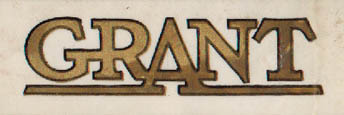

|
By LOU WILIN Staff Writer A north Findlay gas boom era factory -- where both automobiles and and World War I munitions were formerly produced -- is now a pile of rubble. The former Differential Steel Car Co. site, north of East Melrose Avenue and west of the Conrail tracks, was demolished in the past two weeks. Construction of an apartment complex, "The Charleston," will begin next spring at the site, Findlay developer Charles Glaser said. The demolition of the factory, one of the last remaining from Findlay's gas boom days, has caught the interest of Findlay history enthusiasts. Artillery shell casings were produced at the site for use in World War I, local historian Chris Haley said. Earlier, the only cars ever made in Findlay were assembled at the plant from 1914-16. By that time, the factory already had a history. It was built in 1887 and opened in 1888 by Wetherald Wire Nail Co., which employed 125 people for nail production. At that time, the town was exploding with growth due to the discovery of abundant natural gas in the area. Findlay residents who have witnessed debate in recent years over how much the community should offer to lure business might be amused to see the 1880s city leaders' approach to economic development. The Findlay Chamber of Commerce put out offers of free land and free gas to attract industry. "Circulars were issued with the heading "Free Fuel! Free Light! Free Sites!" R.L. Heminger reported in his book "Across the Years in Findlay and Hancock County." "They further proclaimed Findlay as 'the natural mid-continental manufacturing city' and as the 'best city in the union for the establishment of manufacturing industries,'" Heminger wrote. However, businesses could have difficulty, even in Findlay during the gas boom era. What in recent years was known as the Differential site had a revolving door until 1920, according to Findlay history enthusiast Rob Tong. About a year after it opened for business, Wetherald Wire Nail Co. closed because of legal problems, Tong said. Within a month, the factory complex was purchased by Salem Wire Nail Co. Production at the plant skyrocketed with 300 employees, according to Tong. By 1891, concerns about a shortage of gas were starting to leak into newspaper stories. Tong and Haley said that Findlay eventually reneged on some of its promises of free gas to businesses. In fairness to city leaders, they were trying to protect the supply for people's homes, Tong and Haley said. The well that supplied the former Differential building had fizzled out by 1893. Another well was found, but the plant's fuel source was changed to oil in 1894. By 1899, the plant was up for sale, and apparently remained dormant until purchased in 1902 by Findlay Axe & Tool Co. In 1910, it became a production site for heavy industrial trucks when it was bought by Findlay Motor Car Co. That firm went bankrupt and the factory complex then gained perhaps its greatest renown in Findlay history when it was purchased in 1913 by Grant Automobile Co., of Detroit. It became Findlay's first and only auto assembly plant. The Grant Model M Roadster was made at the plant. It seated two, started with a crank in the front, had a convertible canvas top, bicycle wheels and retailed for $495. If you wanted an electric starter instead of the crank, and electric lights instead of gas lights, you had to pay extra, said William Phillips of Findlay. Phillips and Tong each own one of the Model Ms made in 1914. The success of the four-cylinder car led to grander designs for a larger, six-cylinder model, with a back seat, bigger wheels and other improvements, Tong said. It retailed for $795. By 1916, Grant officials decided they had outgrown the Findlay site and relocated operations to Cleveland. Grant would eventually go bankrupt in 1922. In 1918, the former auto plant became a munitions factory and apparently was owned for awhile by the United States government, Haley said. Then in 1920, Differential purchased the plant and used it to make railroad cars until recently. Tong and Phillips expressed sentiment about the demolition of the factory site. However, Haley -- former curator of the Hancock Historical Museum Association -- gave the site mixed reviews for historic value. "There's more historically important buildings we've lost," he said. "It was altered by each of the owners," he added. "As far as making a monument out it, that would not have made sense. A lot of people didn't know about it." He acknowledged that it was one of Findlay's last remaining gas boom period sites. "It was kind of a curiosity," Haley said. | |
|
|
|
|
|
Grant Motor - Site Map
|